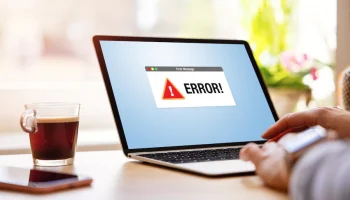Are you aware that the digital world we navigate today is plagued by relentless cyberattacks? From phishing schemes to malware infections and debilitating DDoS attacks, no organization is safe. However, there is hope. In this enlightening article, we delve into the three most common cyberattacks and unveil the vital role of software development companies in preventing them.
Read further to discover the inner workings of phishing attacks, the dangers of malware, and the crippling impact of DDoS assaults. Prepare to be empowered as we unveil the powerful strategies and best practices to safeguard your digital realm via software development by Emphasoft. Stay one step ahead and secure your digital asset and future by delving into this essential knowledge.
Common Cyberattacks
In today’s interconnected world, cybersecurity has become a pressing concern for individuals, startups, and businesses. The prevalence of cyberattacks is rising, with hackers employing increasingly sophisticated techniques to exploit vulnerabilities and compromise sensitive data. Thus, you can fortify your defenses and mitigate the risks by understanding the inner workings of these attacks and the strategies employed by software development companies. So, what do you need to know about these attacks? Find them below.
Common Cyberattack 1: Phishing Attacks
Phishing attacks have become a favorite tool for cybercriminals to deceive unsuspecting victims. Typically, phishing attacks involve tricking individuals into revealing sensitive information such as passwords, credit card details, or personal data. These attacks often employ social engineering techniques to manipulate users or customers to click on malicious links or download infected attachments.
A software development company can significantly contribute to preventing phishing attacks. First, it can develop secure authentication systems that employ advanced encryption and multi-factor authentication. With these robust authentication mechanisms, you can ensure that only authorized individuals gain access to sensitive information.
Moreover, software development companies can develop and deploy email filters and spam detection mechanisms. These filters work tirelessly to identify and block suspicious emails, preventing them from reaching users’ inboxes. By leveraging machine learning algorithms and threat intelligence, software development companies can also enhance the effectiveness of these filters, protecting individuals and businesses from falling victim to phishing attempts.
Regular security awareness training is also crucial in combating phishing attacks. Software development companies can conduct comprehensive training sessions to educate employees on recognizing phishing emails, suspicious links, and potentially harmful attachments. Subsequently, enterprises, startups, or organizations can build a stronger line of defense against cyber threats by empowering their employees with the knowledge to identify and report phishing attempts.
Common Cyberattack 2: Malware Infections
Malware infections pose a significant threat to individuals and enterprises, as they can lead to data breaches, financial loss, and reputational damage. Malware refers to malicious software designed to infiltrate systems, exploit vulnerabilities, and gain unauthorized access.
Software development companies play a critical role in preventing malware infections. They can develop and deploy robust antivirus and antimalware solutions that actively scan for and remove malicious software. These solutions employ advanced algorithms and heuristics to detect and quarantine potential threats, thereby protecting systems from being compromised.
To stay ahead of ever-evolving malware, companies must regularly update their software and systems. This includes promptly applying security patches and fixes to address newly discovered vulnerabilities. So, business owners must stay vigilant and proactive in patch management to ensure their solutions are fortified against the latest malware strains.
Further, software development companies can conduct thorough code reviews and security testing to identify and eliminate vulnerabilities in software. Static code analysis, penetration testing, and vulnerability scanning are the techniques developers use to identify potential entry points for malware and address them before deployment. Through these rigorous security measures, software development companies can help organizations create more resilient software to malware attacks.
Common Cyberattack 3: DDoS Attacks
Distributed Denial of Service (DDoS) attacks aim to overwhelm a targeted website or online service with a flood of traffic, rendering it inaccessible to legitimate users. These attacks disrupt normal operations, cause financial losses, and tarnish the reputation of businesses or enterprises.
To prevent DDoS attacks, software development companies can implement traffic monitoring and anomaly detection systems. These systems can identify unusual spikes or patterns indicative of a DDoS attack by analyzing network traffic patterns in real-time. Once detected, appropriate mitigation measures can be initiated to mitigate the attack impact and ensure service continuity.
Additionally, software development companies can leverage load balancing and content delivery networks (CDNs) to distribute traffic across multiple servers and geographically dispersed locations. By doing so, they can ensure that their infrastructure can handle increased traffic, effectively mitigating the impact of DDoS attacks. Load balancing techniques, such as round-robin or weighted load distribution, help distribute the load evenly, preventing any single server from being overwhelmed.
Developing a scalable infrastructure is also crucial in preventing DDoS attacks. Software development companies can design systems that dynamically scale resources in response to increased traffic. By leveraging cloud computing and containerization technologies, organizations can readily adjust their infrastructure capacity to accommodate the surge in traffic during DDoS attacks.
Best Practices for Cybersecurity
In addition to the specific measures outlined for each type of cyberattack, there are general best practices that individuals and organizations should follow to enhance their cybersecurity posture. These measures include:
- Strong Passwords and Two-Factor Authentication: Encourage using complex passwords and enable two-factor authentication to add an extra layer of security.
- Regular Data Backups and Disaster Recovery Plans: Maintain up-to-date backups of critical data and develop comprehensive disaster recovery plans to ensure business continuity after an attack.
- Regular Software Updates and Patch Management: Keep all software, including operating systems and applications, updated with the latest security patches and updates.
- Security Audits and Penetration Testing: Conduct regular security audits and penetration tests to identify vulnerabilities and proactively address them.
- Culture of Cybersecurity: Foster a culture of cybersecurity awareness among employees through training, policies, and ongoing education programs.
Conclusion
As cyberattacks continue to threaten individuals, startups, and businesses, it is crucial to understand the common cyberattack vectors and the measures a software development company can take to help you prevent them. By adopting best practices and collaborating with software development companies, individuals, enterprises, and organizations can enhance their cybersecurity defenses and confidently navigate the digital landscape. Collaborate with a software development company today to build a more secure and resilient digital asset and future.
Read Also:




























